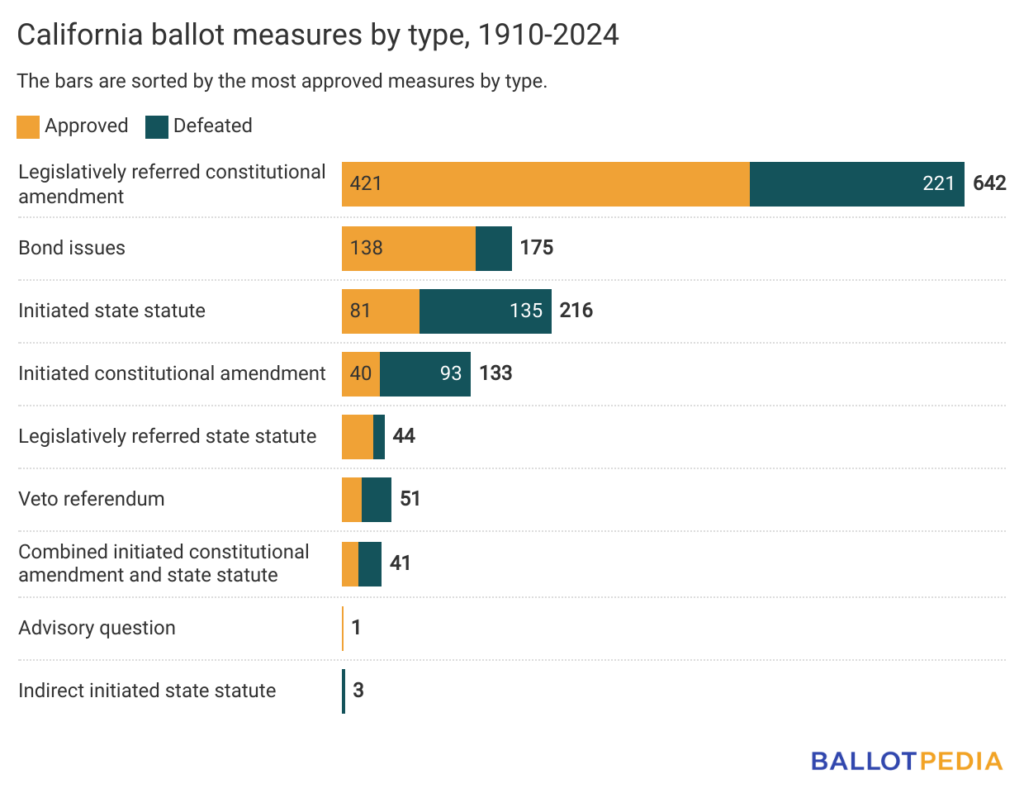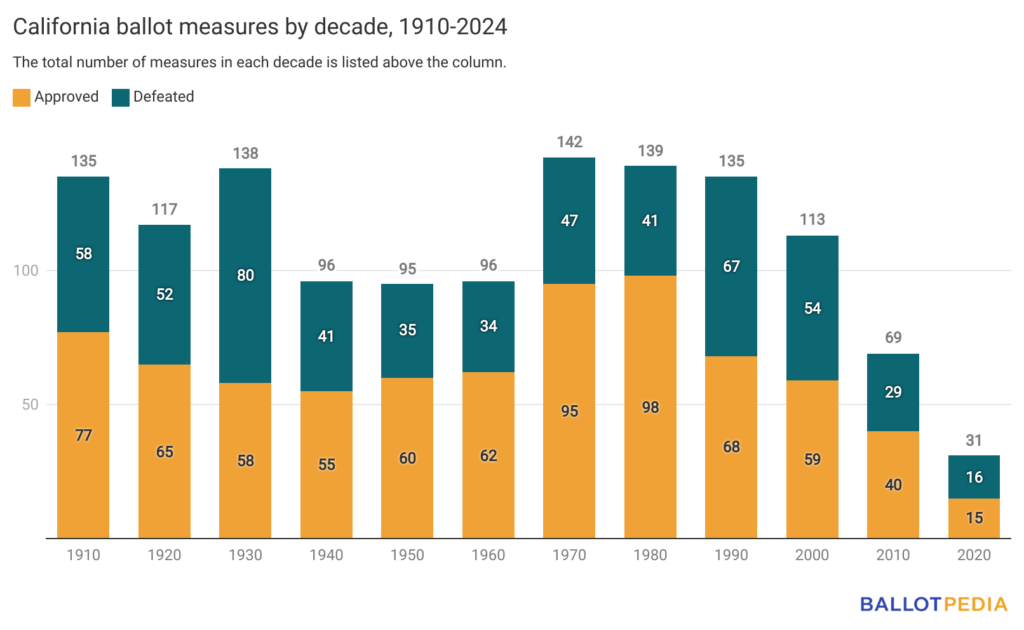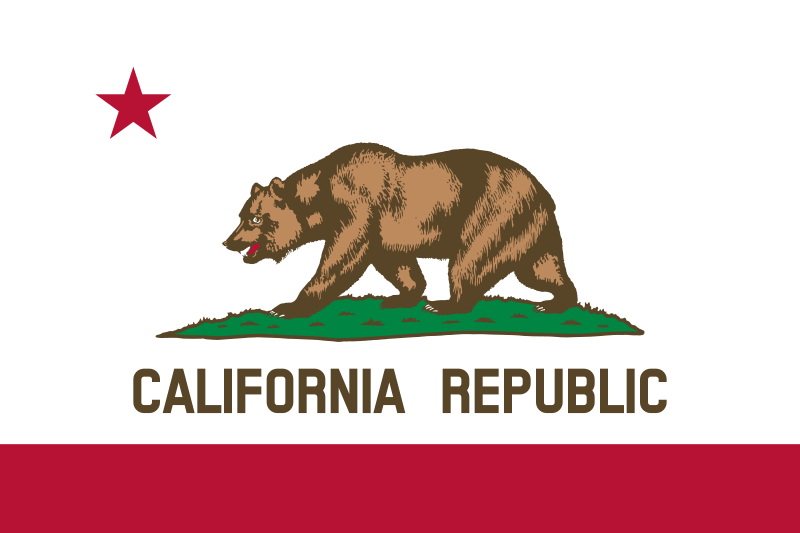Ballotpedia completed an inventory of all California ballot measures since 1910, the year before the state adopted the initiative and referendum process. Californians decided on 1,306 ballot measures between 1910 and 2024. Seven hundred fifty-two (752) measures were approved, and five hundred fifty-four (554) were defeated.
Of the 1,306 ballot measures, 27 were decided by less than a percentage point of the vote. The closest margin by percentage of the vote occurred in 1988 with Proposition 74, which was defeated by just 0.02%. It would have issued $1 billion in bonds for improvements to state highways, streets and roads, and rail transit. The widest margin by percentage of the vote was Proposition 12 in 1972. The extension of a tax exemption for disabled veterans was approved with 89.73% of the vote. The measure defeated by the largest margin was Proposition 101, which would have reduced bodily injury and uninsured motorist insurance rates and capped claims for non-economic losses and lawyer contingency fees. The initiative was rejected by 86.73% of voters.
In California, citizens have the power to initiate constitutional amendments, state statutes, combined initiated constitutional amendments and state statutes, and veto referendums. These powers were established with voter approval of a constitutional amendment in 1911.
From 1911 to 1966, initiated statutes were indirect in California. Voters made the process direct with the approval of Proposition 1A in 1966.
The California State Legislature can refer constitutional amendments, state statutes, and bond measures to the ballot. Constitutional amendments and bond measures require a two-thirds (66.67%) vote in each chamber during one legislative session. Bond issues also require the governor's signature. Statutes referred to the ballot require a simple majority vote in each chamber during one legislative session. State statutes also require the governor's signature.
Measures put on the ballot by the state legislature had better success at the ballot box than citizen-initiated measures. Legislatively referred measures were approved 69% of the time, as compared to 36% for ballot initiatives.

California ballot measures have addressed 91 unique topics with some addressing multiple topics in one measure. The top three topics addressed were taxes, bond issues, and education.
The average number of measures per decade was about 109, and the average number of measures approved per decade was 57.1%. The decade with the most ballot measures was the 1970s, which featured 142 ballot measures. Ninety-five measures (66.9%) were approved, and 47 (33.1%) were defeated. The decade that had the highest approval rate was the 1980s, which featured 139 measures—98 (70.5%) were approved, and 41 (29.5%) were defeated. The decade with the lowest approval rating was the 1930s. The decade featured 138 ballot measures—58 (42.0%) were approved and 80 (58.0%) were defeated.

The inventory of California statewide ballot measures is part of Ballotpedia's Historic Ballot Measure Factbook, which will document nearly 200 years of direct democracy in the United States. This ongoing research effort will provide an unparalleled resource for researchers, reporters, and the voting public on how ballot measures have evolved, the issues they've covered, and the role they have played in our civic life.


